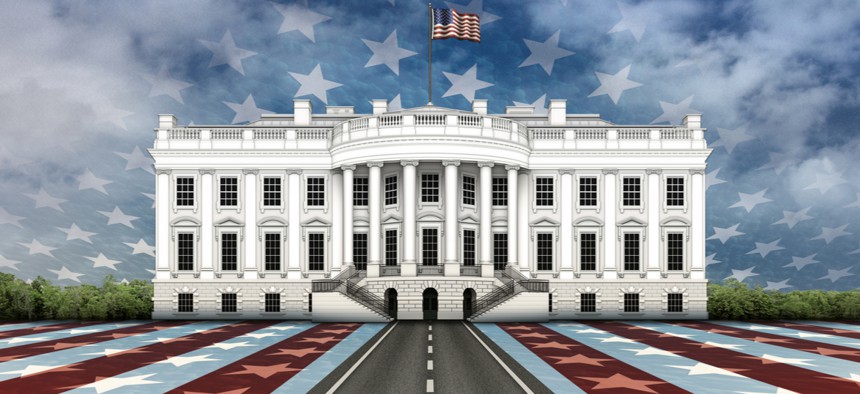This is What The White House Science And Tech Office Has Been Up To

Jim Larkin/Shutterstock.com
The president’s science and technology advisers released a rundown of major milestones over the last year, from creating the American Technology Council to the passage of the Modernizing Government Technology Act.
President Donald Trump has yet to name a director of the Office of Science and Technology Policy but that doesn’t mean the office hasn’t been working on the administration’s tech priorities.
An OSTP official told Nextgov in February that the administration is in the process of getting a director candidate nominated and through Senate confirmation, though they declined to give a specific timeline. The office is staffed by about 50 people, which the official said is on par with the early Obama years before the office grew to more than 65 people. By the end of Obama’s term, the office had grown to more than 130 staff members, according to the New York Times.
Since the 1970s, the office has been home to the president’s science advisers, and under the Obama administration, held the federal chief technology officer and supporting staff. The federal CTO position remains vacant, though Trump appointed deputy CTO Michael Kratsios last year.
The office released on Wednesday a rundown of the administration’s tech achievements to date in which OSTP staff had a hand. Here are highlights:
Artificial Intelligence
The Million Veteran Program Computational Health Analytics for Medical Precision to Improve Outcomes now, or MVP CHAMPION, launched in April, a collaboration between Veterans Affairs and the Energy Department to apply machine learning to veteran health data.
Autonomous Vehicles
The Transportation Department released an update to the Automated Vehicles Policy with a focus on safety of self-driving cars. The new policy was followed up with public outreach to continue the conversation on how to integrate autonomous vehicles on the nation’s roads.
The department, at the behest of the president, started a drone integration pilot program in October to help state and local governments jumpstart commercial drone uses. A month later, almost 2,000 had applied.
Education
Any discussion of technology has to include investment in the future. The president signed a memo in September directing the secretary of education to prioritize STEM programs when awarding grants. He also signed the Inspiring the Next Space Pioneers, Innovators, Researchers and Explorers, or INSPIRE, Women Act in February.
Government Technology
Early in the administration, Trump created the American Technology Council to advise him on how best to modernize government technology. The group issued the Federal IT Modernization Report in December, with set tasks for agencies to complete by June.
The White House also worked with Congress on passage of the Modernizing Government Technology Act—legislation intended to help agencies kickstart modernization efforts.
Health Technology
The Food and Drug Administration released the Digital Health Innovation Action Plan in July, which provides guidance to the private sector on how to build security into medical software, including those used in implanted devices.
The rundown cites Health and Human Services’ priorities for health IT—namely, increasing usability and interoperability of patient data—but does not mention the administration’s “whole of government” push on these issues announced by presidential adviser Jared Kushner March 6.
After Trump created a presidential commission to study the opioid addiction crisis, HHS and its components worked to produce a five-point plan of attack that included several technology initiatives. The department also held an opioid code-a-thon in December, bringing together computer scientists and technologist to dissect the problem.
Space Exploration
The president has shown an interest in further exploration beyond our planet. Last year, he signed an executive order to reestablish the National Space Council and authorized Space Policy Directive – 1, which calls on NASA to explore the solar system, including leading another expedition to the moon.






